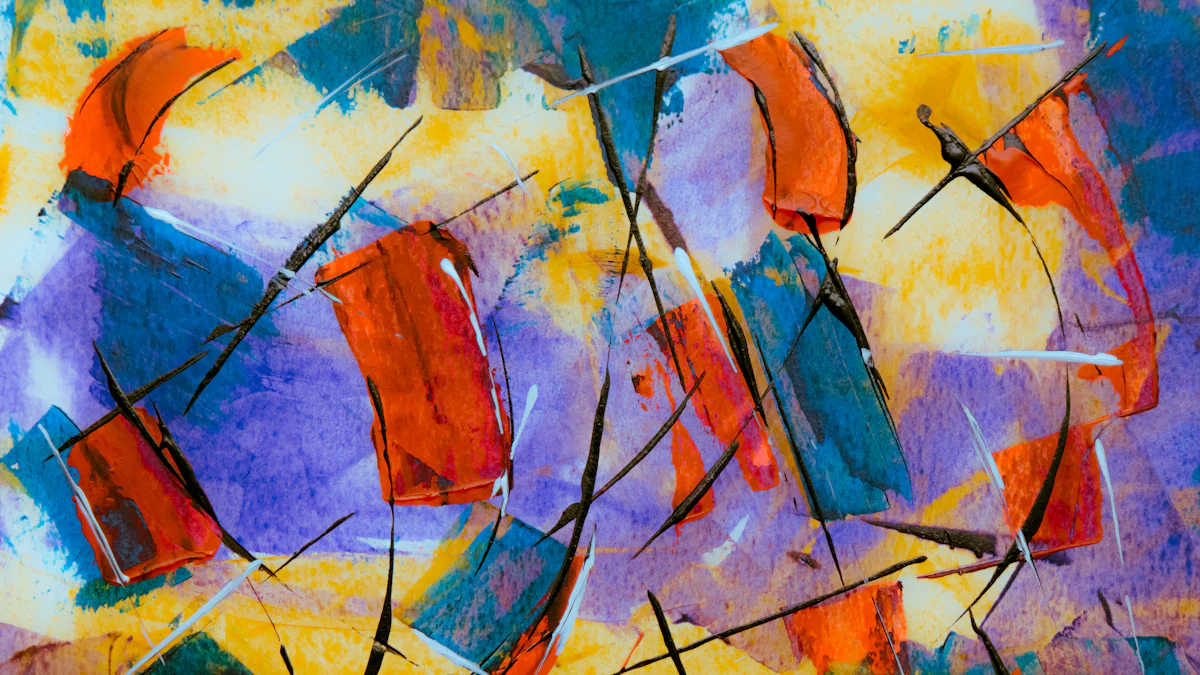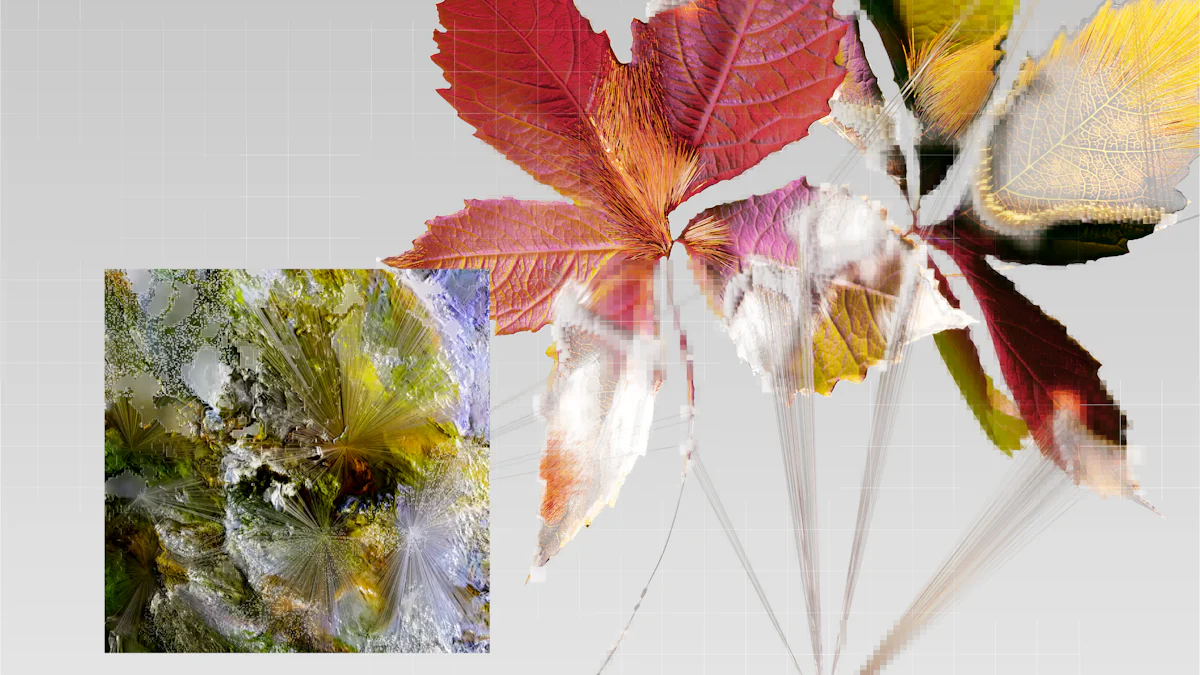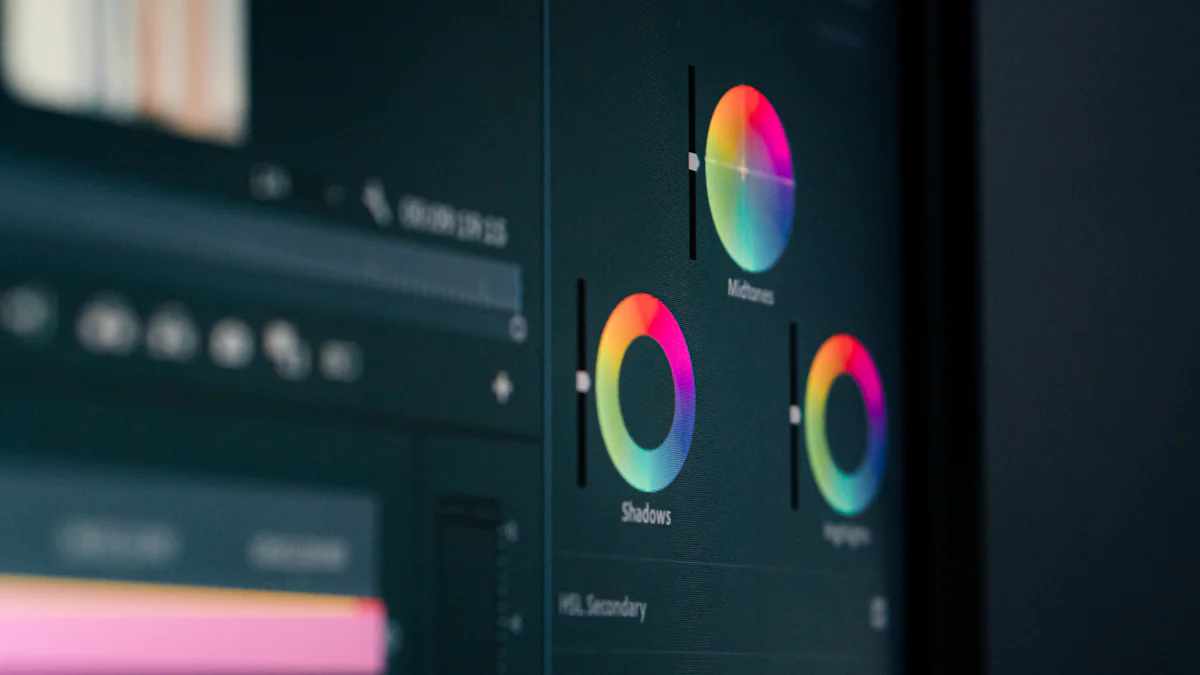Top Tips for Crafting Stunning AI-Generated Art

Creating AI art is transforming the creative world, opening doors to endless possibilities. With its rapid growth—like a *342% increase in sales from 2019 to 2020*—it’s clear that this innovative medium is here to stay. You don’t need to be a professional artist to create breathtaking visuals anymore. AI art generators empower you to bring your imagination to life with just a few clicks. Whether you’re crafting surreal landscapes or minimalist portraits, creating AI art allows you to explore uncharted artistic territories and redefine what creativity means.
Key Takeaways
Choose the right AI art generator by considering ease of use, output quality, and customization options to match your creative needs.
Craft effective prompts by being specific and descriptive; the more detail you provide, the better the AI can understand and execute your vision.
Experiment with different settings and parameters in AI tools to create unique artwork that reflects your personal style and artistic intent.
Post-process your AI-generated art using tools like Photoshop or GIMP to enhance colors, correct flaws, and add depth for a polished final piece.
Embrace minimalism in your AI art to create impactful visuals that focus on clean lines and negative space, allowing your artwork to resonate with viewers.
Utilize iterative generation to explore multiple variations of your prompts, helping you discover unexpected and inspiring results.
Combine different AI tools to leverage their strengths, creating hybrid artwork that showcases your creativity and innovation.
Choosing the Right AI Art Generator

Selecting the perfect ai art generator can feel overwhelming with so many options available. Each tool offers unique features, making it essential to understand what suits your creative needs. Let’s explore some popular ai art generators and the factors to consider when you’re ready to choose the right AI tool.
Overview of Popular AI Art Generators
DALL-E: Features and Best Use Cases
DALL-E, developed by OpenAI, stands out for its ability to transform text descriptions into stunning visuals. Whether you want realistic portraits or abstract designs, this tool delivers high-quality results. It excels at creating imaginative and surreal images, making it ideal for projects that require a touch of creativity. If you’re looking to experiment with ai-powered image generation, DALL-E is a fantastic starting point.
Midjourney: Strengths and Unique Capabilities
Midjourney combines advanced technology with user-friendly features. It’s known for producing photorealistic images that look like they were captured by a professional camera. This tool is perfect for those who want flexibility and ease of use. Whether you’re a beginner or an experienced artist, Midjourney helps you create visually striking artwork effortlessly.
Stable Diffusion: Flexibility and Customization
Stable Diffusion is a favorite among artists for its versatility. It allows you to explore a wide range of styles and themes, from hyper-realistic portraits to abstract art. This tool also supports customization, giving you control over the final output. If you enjoy experimenting with different artistic approaches, Stable Diffusion offers endless possibilities.
Factors to Consider When Selecting an AI Art Generator
Ease of Use and Accessibility
When choosing the right ai art generator, prioritize ease of use. Some tools, like Midjourney, are designed with simplicity in mind, making them accessible even for beginners. Look for platforms that offer intuitive interfaces and clear instructions. This ensures you spend more time creating and less time figuring out how the tool works.
Cost and Subscription Options
Budget plays a significant role in your decision. Many ai art generators offer free versions or trial periods, but advanced features often require a subscription. Compare pricing plans and decide what fits your needs. Tools like Stable Diffusion provide excellent value for their flexibility and customization options.
Output Quality and Style Variety
The quality of the generated images matters, especially if you’re using them for professional purposes. Tools like DALL-E and Midjourney excel in producing high-resolution visuals. Additionally, consider the variety of styles each generator offers. A tool that supports multiple artistic styles gives you more creative freedom.
By understanding these tools and evaluating your priorities, you can confidently choose the right AI tool for your artistic journey. Whether you’re drawn to DALL-E’s surreal capabilities, Midjourney’s photorealism, or Stable Diffusion’s versatility, there’s an ai art generator that’s perfect for you.
Crafting Effective Prompts for AI Art Generation
Creating stunning AI art starts with crafting effective prompts. The way you communicate your vision to the AI determines the quality of the output. Let’s dive into how you can master this crucial step in AI art generation.
The Role of Specificity in Creating AI Art
Using Descriptive Language to Guide the AI
When writing AI art prompts, specificity is your best friend. The more detailed your description, the better the AI understands your vision. Instead of saying “a forest,” describe it as “a dense, misty forest with towering pine trees and soft sunlight filtering through the branches.” This level of detail helps the AI create high-quality AI art that aligns with your expectations. Use adjectives, nouns, and verbs that paint a vivid picture. Think about the colors, textures, and atmosphere you want to convey.
Incorporating Styles, Emotions, and Themes
AI art generation becomes even more powerful when you include artistic styles, emotions, and themes in your prompts. For instance, if you want a painting inspired by Van Gogh, mention “in the style of Van Gogh.” If you’re aiming for a serene mood, add words like “calm” or “peaceful.” Themes such as “futuristic cityscape” or “vintage countryside” can also guide the AI to produce more focused results. By incorporating these elements, you can create high-quality AI art that feels intentional and unique.
Examples of High-Quality Prompts
Prompt Example 1: Designing a Surreal Landscape
Here’s an example of a strong prompt: “A surreal landscape featuring floating islands with cascading waterfalls, glowing purple skies, and a giant moon in the background.” This prompt provides clear details about the setting, colors, and mood, ensuring the AI delivers a visually striking result.
Prompt Example 2: Crafting a Minimalist Portrait
For a minimalist portrait, you could write: “A black-and-white minimalist portrait of a woman with sharp features, short hair, and a calm expression, set against a plain white background.” This prompt focuses on simplicity while still offering enough detail to guide the AI effectively.
Common Mistakes to Avoid in Prompt Writing
Being Too Vague or Generic
Vague prompts like “a beautiful scene” or “a cool design” often lead to disappointing results. The AI struggles to interpret what you mean without specific guidance. Always aim to use high-quality prompts that include detailed descriptions of the subject, environment, and style.
Overloading the Prompt with Conflicting Details
While detail is essential, overloading your prompt with too many conflicting elements can confuse the AI. For example, asking for “a futuristic cityscape with medieval castles and a tropical jungle” might result in a chaotic image. Stick to a clear vision and avoid mixing unrelated ideas.
By learning to use high-quality prompts, you can unlock the full potential of AI art generation. Whether you’re designing a surreal landscape or a minimalist portrait, mastering AI art generation starts with clear, specific, and intentional prompts. With practice, you’ll see how much of a difference this makes in creating breathtaking visuals.
Experimenting with AI Art Settings and Parameters
When it comes to creating truly captivating visuals, experimenting with different settings in AI art generation can make all the difference. By tweaking parameters and exploring various techniques, you can unlock the potential to produce unique and original artwork that reflects your creative vision. Let’s dive into how you can fine-tune your AI art and take it to the next level.
Adjusting Key Parameters for Unique AI-Generated Artwork
Exploring Color Balance and Contrast
Color balance and contrast play a huge role in shaping the mood and impact of your artwork. Most AI tools allow you to adjust these settings, giving you control over the visual tone. For instance, increasing contrast can make your image pop, while subtle color adjustments can evoke specific emotions. Imagine creating a serene landscape with soft pastel hues or a dramatic scene with bold, high-contrast colors. Experiment with different settings to see how small changes can transform your AI-generated art into something extraordinary.
Tweaking Composition and Style Settings
The composition of your artwork determines how elements are arranged within the frame. Many AI art generators let you tweak composition settings, such as symmetry, focal points, or even the level of detail. You can also explore style settings to match your desired aesthetic. Whether you’re aiming for a minimalist design or a complex composition, adjusting these parameters helps you craft artwork that feels intentional and polished. Don’t hesitate to try different combinations until you achieve the perfect balance.
Using Iterative Generation to Refine AI Art
Generating Multiple Variations of the Same Prompt
One of the most exciting aspects of AI art generation is the ability to generate multiple variations of the same prompt. This feature allows you to explore different interpretations of your idea without starting from scratch. For example, if you’re designing a futuristic cityscape, you can create several versions with varying lighting, angles, or architectural styles. This iterative process not only saves time but also helps you discover unexpected results that might inspire new directions.
Selecting and Combining the Best Elements
Once you’ve generated multiple variations, the next step is to identify the strongest elements from each version. Maybe one image has the perfect color palette, while another nails the composition. By combining these elements, you can create a final piece that captures the best of both worlds. Some AI tools even allow you to merge images directly, making it easier to refine your artwork. This approach ensures that your final creation stands out as a truly unique and original artwork.
Advanced Techniques for Customization
Using External Models or Plugins
For those looking to push boundaries, integrating external models or plugins can open up new possibilities. Many AI tools support third-party plugins that enhance functionality, such as adding specific artistic styles or improving resolution. You can also use external models trained on niche datasets to achieve highly specialized results. These advanced techniques give you more control and flexibility, allowing you to experiment with different settings and create artwork that feels truly one-of-a-kind.
Combining AI Tools for Hybrid Results
Why limit yourself to just one tool? Combining multiple AI tools can lead to hybrid results that are greater than the sum of their parts. For instance, you could use one generator to create a base image and another to add intricate details or apply a specific style. This approach encourages exploring different techniques and broadens your creative horizons. By leveraging the strengths of various tools, you can produce artwork that is both innovative and deeply personal.
Experimenting with AI art settings and parameters is all about embracing creativity and curiosity. Whether you’re adjusting color balance, refining prompts, or combining tools, every tweak brings you closer to realizing your artistic vision. So, don’t be afraid to experiment with different settings and see where your imagination takes you.
Enhancing AI-Generated Artwork with Post-Processing

Creating stunning visuals doesn’t end with AI art generation. Post-processing plays a vital role in refining your creations and elevating them to professional-quality artwork.
Why Post-Processing is Essential for AI Art
Adding Depth and Refinement to AI Art
AI-generated artwork often provides a strong foundation, but it may lack the finishing touches that make it truly stand out. Post-processing allows you to enhance details, adjust lighting, and fine-tune textures. For example, you can amplify the vibrancy of colors or create a more dramatic contrast to evoke a specific mood. These refinements help your artwork feel polished and intentional, giving it a professional edge.
Correcting Minor Flaws or Artifacts
AI tools sometimes produce minor flaws, such as awkward edges or inconsistent lighting. Post-processing helps you address these issues. You can smooth out rough areas, fix distortions, or balance uneven tones. This step ensures your final piece looks cohesive and visually appealing. Think of it as the final layer of polish that transforms a good image into a great one.
Recommended Post-Processing Tools
Photoshop: Advanced Editing Capabilities
Photoshop is a powerhouse for post-processing. It offers advanced tools for editing and enhancing your artwork. You can use its AI-powered features to adjust lighting, remove artifacts, or even add creative effects. Photoshop’s versatility makes it ideal for improving ai-generated images, whether you’re refining textures or experimenting with bold artistic choices. Its layer-based editing system also gives you precise control over every aspect of your image.
GIMP: A Free and Powerful Alternative
If you’re looking for a cost-effective option, GIMP is an excellent choice. This open-source software provides many of the same features as Photoshop, including tools for color correction, texture enhancement, and flaw removal. GIMP is perfect for artists who want to post-process their artwork without investing in expensive software. Its user-friendly interface makes it accessible, even if you’re new to editing.
Practical Post-Processing Tips
Enhancing Colors and Textures
To make your ai-generated artwork pop, focus on enhancing colors and textures. Adjust the saturation to make hues more vibrant or tone it down for a softer look. Sharpening textures can add depth and realism, especially in detailed areas like foliage or fabric. Experiment with these adjustments to find the perfect balance that complements your artistic vision.
Adding Final Touches for a Polished Look
The final touches can make all the difference. Consider adding subtle effects like vignettes to draw attention to the focal point or softening harsh edges for a more cohesive feel. You can also experiment with overlays, such as light flares or grain, to give your artwork a unique character. These small tweaks ensure your piece feels complete and ready to share with the world.
By taking the time to post-process your artwork, you can transform your AI-generated images into masterpieces that truly reflect your artistic vision.
The Power of Simplicity in AI Art
Minimalism has a unique charm. It strips away the unnecessary and focuses on the essence of art. When applied to AI art generation, minimalism creates visuals that are clean, impactful, and timeless. By embracing simplicity, you can craft artwork that speaks volumes without overwhelming the viewer.
Why Minimalism Enhances AI Art
Focusing on Clean Lines and Simple Compositions
Clean lines and simple compositions are the backbone of minimalist art. AI art generation excels at creating these elements with precision. For example, you can use AI to design geometric patterns or sleek forms that feel both modern and elegant. These designs often blend seamlessly into minimalist spaces, enhancing their aesthetic appeal. By focusing on clarity and balance, you allow your artwork to breathe and make a statement without distraction.
Minimalist AI art also works well because it avoids clutter. Instead of overwhelming the viewer with too many details, it highlights the beauty of simplicity. Whether it’s a single bold shape or a carefully arranged composition, the result feels intentional and refined.
Using Negative Space to Create Impact
Negative space, or the empty areas around the subject, plays a crucial role in minimalist art. AI art generation allows you to experiment with negative space effortlessly. By leaving parts of the canvas untouched, you can draw attention to the focal point of your artwork. This technique creates a sense of balance and harmony, making the piece more visually striking.
For instance, imagine an AI-generated design featuring a single black circle on a white background. The simplicity of the composition, combined with the use of negative space, creates a powerful visual impact. This approach not only enhances the aesthetic but also evokes emotions, proving that less truly is more.
Examples of Stunning Minimalist AI Art
Case Study 1: Abstract Minimalism
Abstract minimalism thrives on simplicity and creativity. AI art generation can produce abstract designs that feel both organic and intentional. For example, you might generate a piece with flowing lines and soft gradients that evoke a sense of calm. These designs often work well in modern interiors, adding a touch of sophistication without overpowering the space.
AI-generated abstract art also allows for endless customization. You can adjust colors, textures, and patterns to match your vision. This flexibility makes it easy to create artwork that feels personal and unique while staying true to minimalist principles.
Case Study 2: Monochromatic Designs
Monochromatic designs are another excellent example of minimalist AI art. By focusing on a single color palette, you can create visuals that feel cohesive and elegant. AI art generation simplifies this process by allowing you to experiment with different shades and tones effortlessly.
For instance, you could generate a monochromatic piece featuring soft blues or warm grays. These designs often exude a sense of tranquility, making them perfect for spaces that need a calming touch. The simplicity of the color scheme, combined with the precision of AI, results in artwork that feels timeless and sophisticated.
Minimalism in AI art isn’t just about reducing complexity. It’s about finding beauty in simplicity and creating visuals that resonate with the viewer. By focusing on clean lines, negative space, and thoughtful compositions, you can unlock the full potential of AI art generation. Whether you’re drawn to abstract forms or monochromatic palettes, minimalism offers endless opportunities to create stunning and impactful artwork.
Creating stunning visuals through ai art generation is an exciting journey. By choosing the right tools, crafting detailed prompts, and experimenting with settings, you unlock endless creative possibilities. AI art empowers you to explore new ideas, refine your vision, and produce unique artwork without needing traditional artistic skills. Dive into this evolving world, embrace experimentation, and let your imagination guide you. The future of ai art generation holds immense potential, blending human creativity with machine innovation. Start creating today and discover how AI can transform your artistic expression.
FAQ
Can AI make art more accessible while being fair to human artists?
AI has opened doors for many people to create art, even those without traditional artistic skills. It makes art creation more accessible by simplifying complex processes. However, fairness to human artists remains a concern. To ensure balance, you can use AI tools as a complement to human creativity rather than a replacement. For instance, crediting original artists when using AI-generated art inspired by their work shows respect for their contributions. Transparency about how AI is used in the creative process also helps maintain fairness.
How can you use AI in a way that respects human artists and their work?
Respecting human artists starts with acknowledging their originality and effort. When using AI, avoid replicating existing works without permission. Instead, focus on creating something new and unique. Many AI tools allow you to blend your ideas with their capabilities, which keeps the human touch alive. You can also support artists by collaborating with them or purchasing their work, ensuring they remain valued in the creative ecosystem.
Will AI replace human artists in the future?
AI will likely change how art is created, but it won’t replace human artists. Machines can generate visuals, but they lack the emotional depth and personal experiences that humans bring to their creations. AI serves as a tool to enhance creativity, not as a substitute for it. Human artists will always have a unique perspective that machines cannot replicate. By embracing AI as a partner, you can expand your creative possibilities without losing the human element.
How could AI change the future of art and creativity?
AI has the potential to revolutionize art by introducing new styles, techniques, and possibilities. It can help you experiment with ideas that might be difficult to achieve manually. For example, AI can generate surreal landscapes or futuristic designs in minutes. However, the future of art will still depend on human creativity. By combining your vision with AI’s capabilities, you can push the boundaries of what’s possible while ensuring that human artistry remains at the core.
Are there ways to ensure human artists remain valued in an AI-driven world?
Yes, there are several ways to keep human artists valued. One approach is to highlight the unique qualities of human-made art, such as emotional depth and storytelling. Supporting local artists, attending exhibitions, and purchasing handmade pieces also help sustain their relevance. Additionally, you can advocate for ethical AI practices, like ensuring that AI-generated art doesn’t plagiarize or overshadow human creations. By valuing both AI and human contributions, you can create a balanced artistic landscape.
What are some ethical concerns with AI-generated art?
Ethical concerns often revolve around originality and ownership. For instance, if an AI tool generates art based on existing works, who owns the final piece? To address this, you should use AI responsibly by avoiding direct replication of copyrighted material. Transparency about the role of AI in your creations also builds trust with your audience. Ethical use of AI ensures that both technology and human creativity coexist harmoniously.
Can AI help beginners become better artists?
Absolutely! AI tools are perfect for beginners because they simplify the creative process. They can guide you in understanding composition, color theory, and style. For example, you can input a basic idea, and the AI will generate a visual representation, giving you inspiration to refine your skills. Over time, you can learn from these outputs and develop your artistic abilities. AI acts as a mentor, helping you grow while encouraging your unique creativity.
How do you write effective prompts for AI art?
Writing effective prompts requires clarity and detail. Be specific about what you want the AI to create. For example, instead of saying “a landscape,” describe it as “a serene mountain landscape with a glowing sunset and a calm lake.” Including details about colors, mood, and style helps the AI understand your vision better. Experimenting with different prompts also allows you to discover what works best for your creative goals.
Is AI art considered “real” art?
This question often sparks debate. Many believe that art is defined by creativity and expression, which AI can facilitate. While AI lacks emotions, it can still produce visually stunning pieces based on your input. The key lies in how you use AI. If you guide the process and infuse your ideas, the final piece reflects your creativity, making it “real” art. Ultimately, art is subjective, and its value depends on how it resonates with the viewer.
How can you start creating AI art today?
Getting started with AI art is easier than ever. Begin by exploring free tools like NightCafe or Vondy, which are user-friendly and accessible. Experiment with simple prompts to see how the AI responds. As you gain confidence, try more advanced tools like DALL-E or Stable Diffusion for greater customization. Remember, the journey is about learning and experimenting. Dive in, have fun, and let your imagination guide you!
See Also
Mastering Online AI Painting Tools For Incredible Art
Boosting Creativity: Effective Use of AI-Generated Content
Discovering Top Alternatives to Midjourney for AI Art

